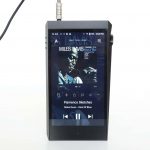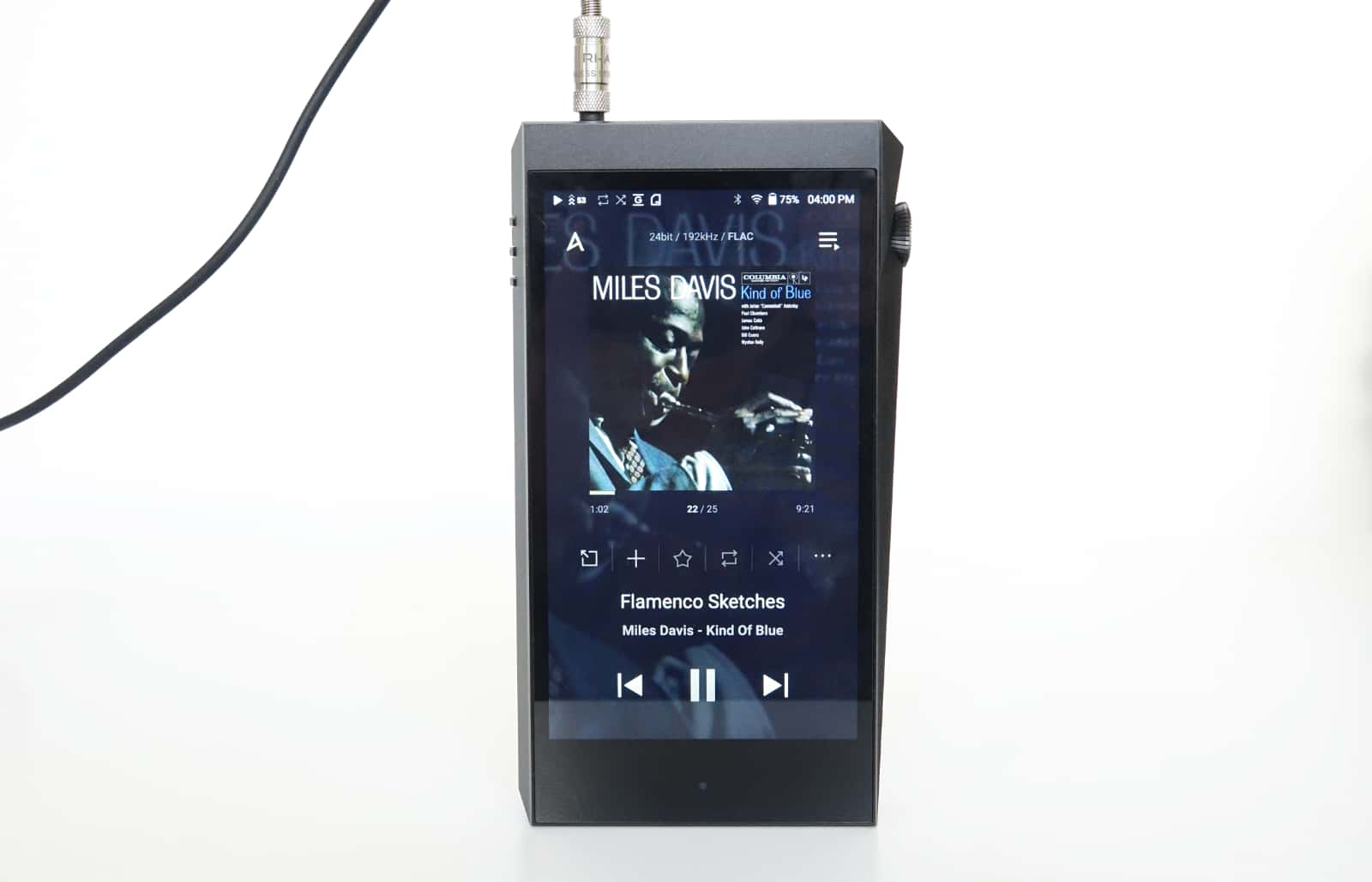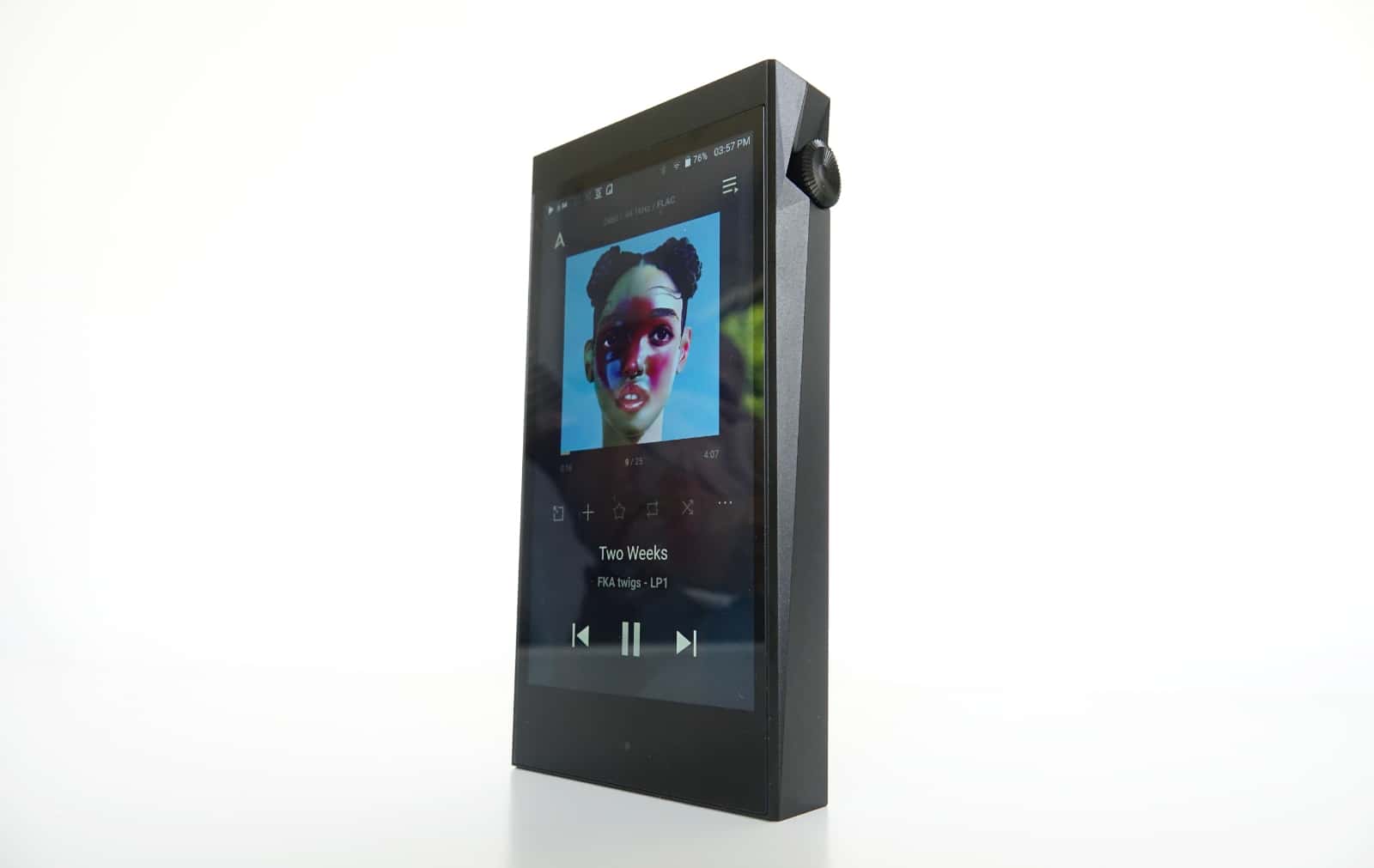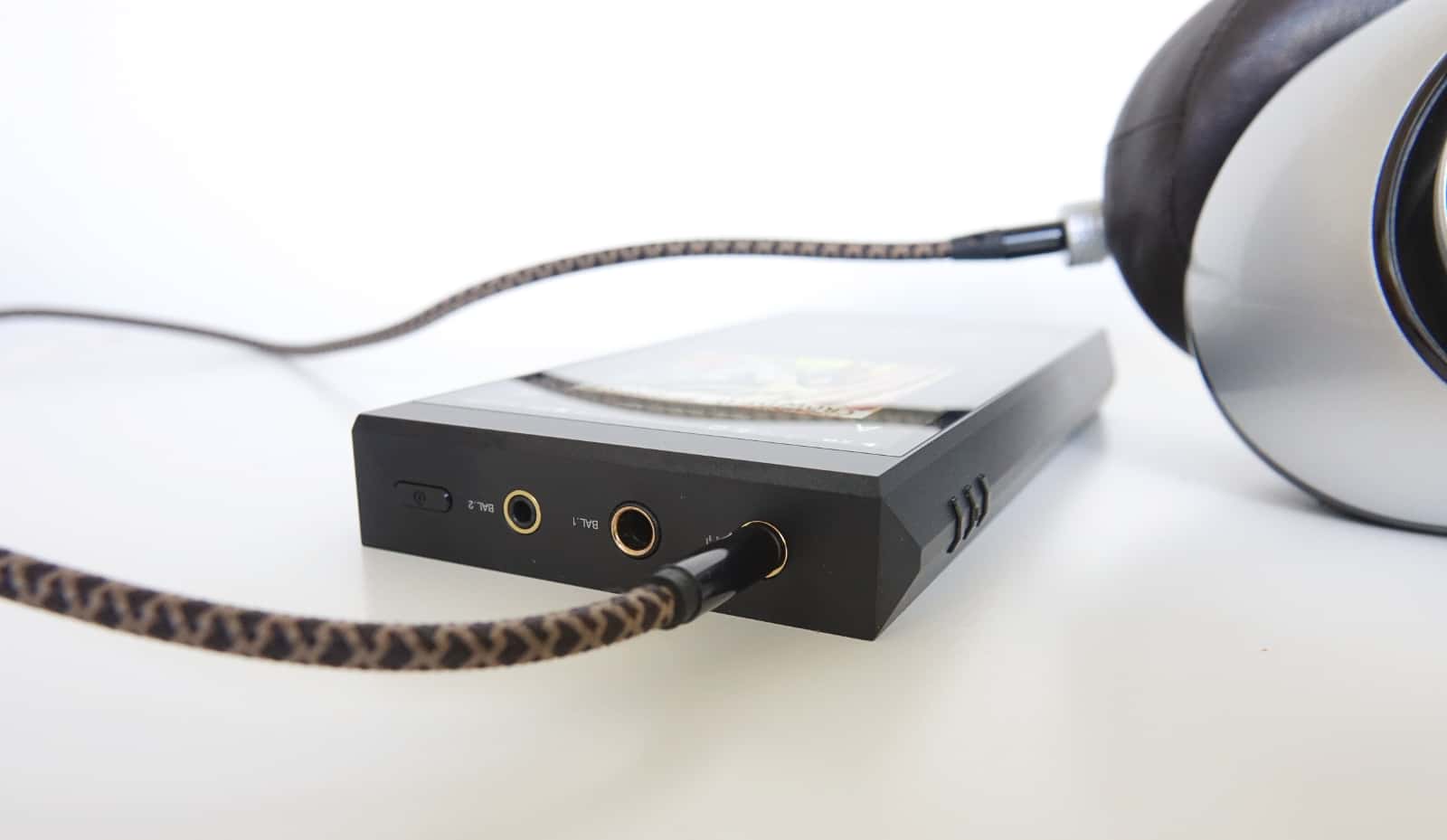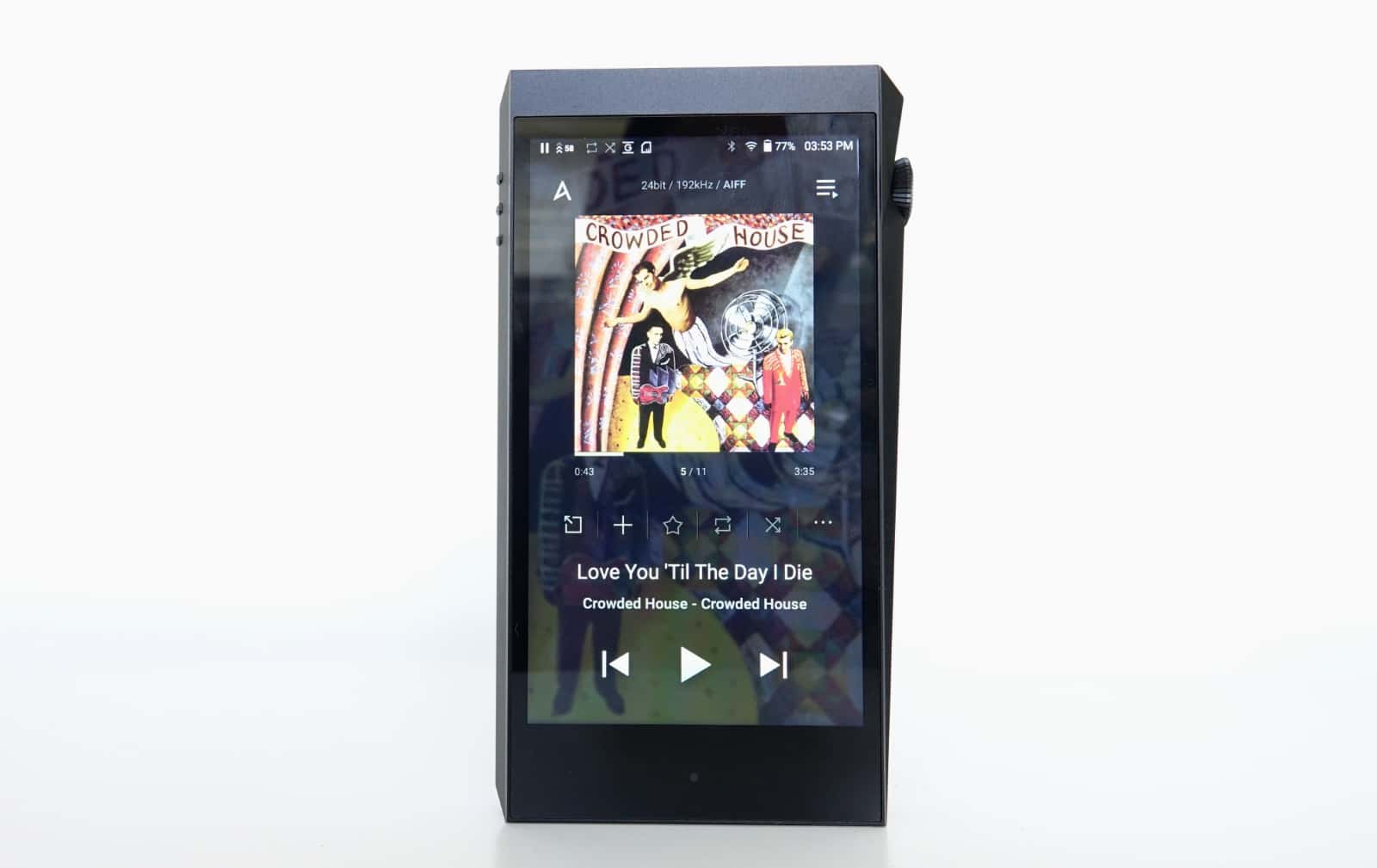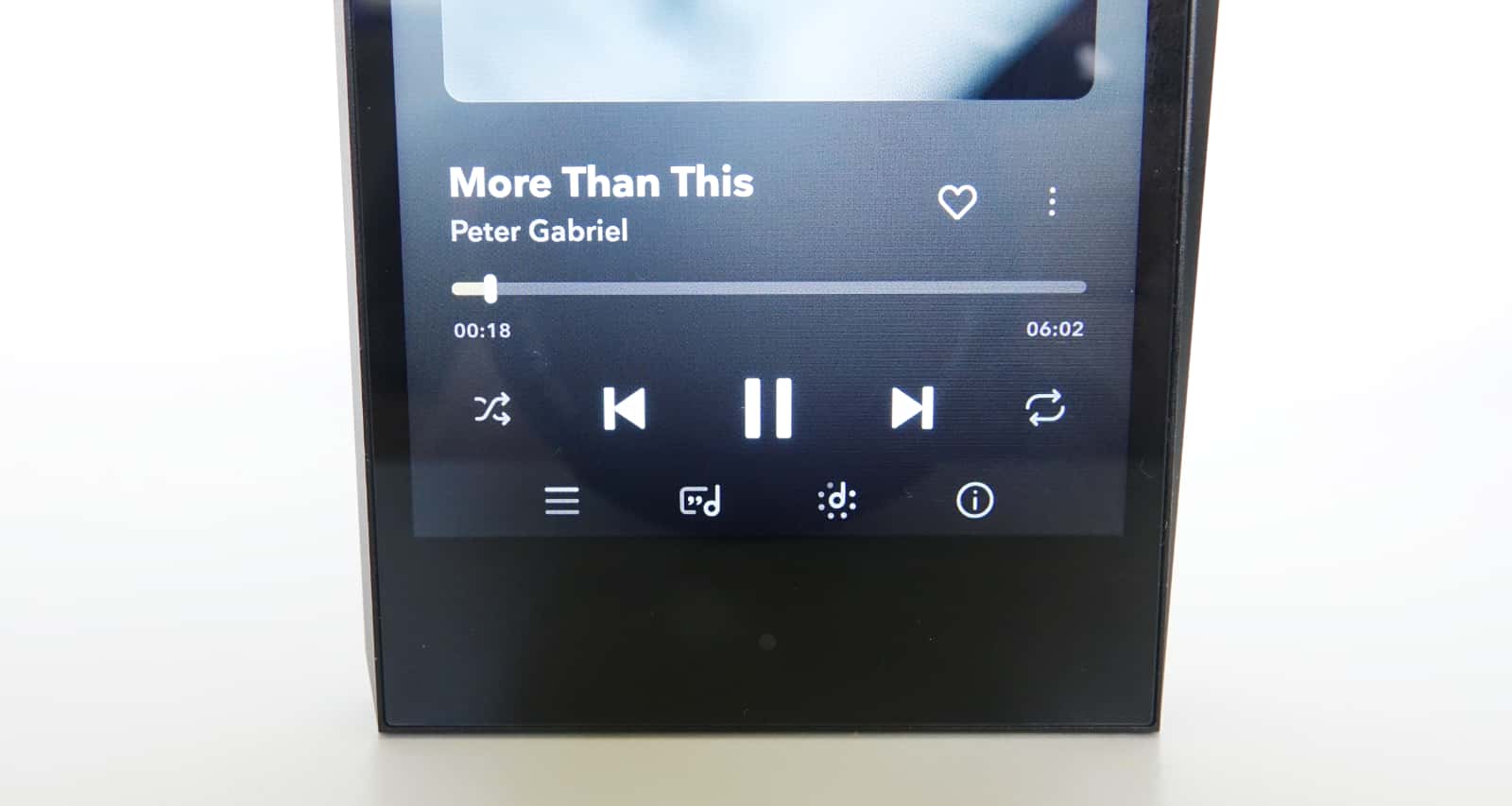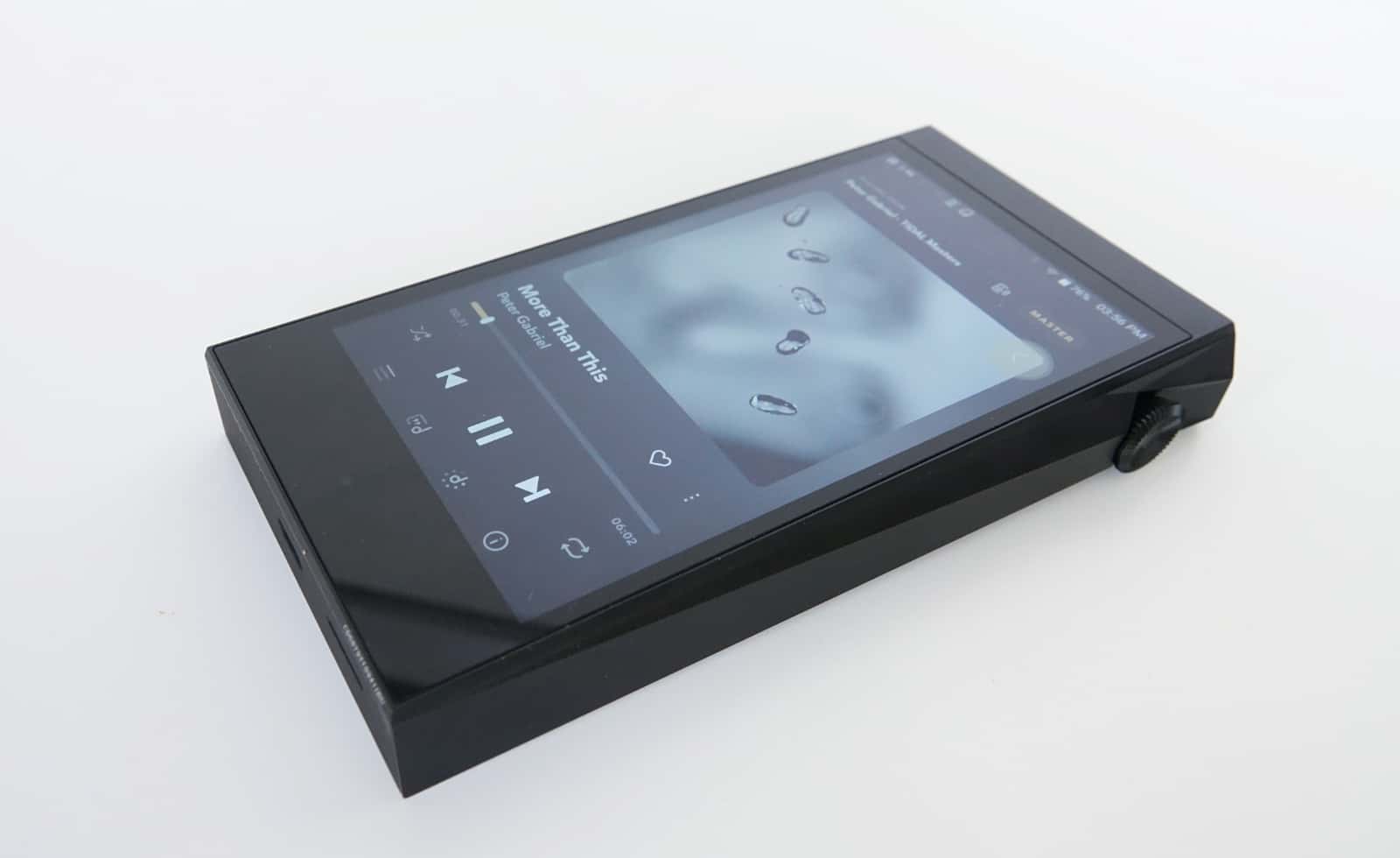Quick review
The good
The not-so-good
At over $3K, the Astell & Kern SP2000T is one of the more expensive media players we’ve ever seen, and while feature-rich, it comes with a rather irritating flaw. Is it worth what you pay?
In a world so dependent on listening to music like ours, you probably won’t be shocked to learn people are happy to spend big dollar bucks on the gadgets that help them tune in and listen.
Design
Arriving in a pretty luxurious wooden box, you get the idea that the SP2000T is high-end before you even lay eyes on it, or even find out what’s inside.
A relatively sizeable chunk of a media player, Astell & Kern’s SP2000T isn’t like the Norma SR25 we saw earlier in the year, and not just because its screen is angled the right way up. While that model would have annoyed many an OCD sufferer, the SP2000T includes a vertically straight 5 inch Full HD screen encased in a large 17.5mm thick aluminium case that weighs more than most phones.
In fact, at 309 grams, it’s over the 238 gram weight of Apple’s biggest 2021 iPhone, the iPhone 13 Pro Max, and even bigger than last year’s chunky Samsung Galaxy Z Fold 2 foldable, which was basically two phones held together by a hinge. Tipping the scales at over 300 grams, the SP2000T is remarkably heavy and impossible to miss in your pocket, thanks in part to its design.
While the weight is one thing, the angular aluminium allow shape is another factor, and one that just feels like it makes a dent in the ways you won’t want it to.
Add a case and you’ll add more cost — the leather SP2000T case is an optional $199 extra — and while it protects the thing, it also softens the edges a little, making it more of a necessity if you wanted this massive media player.
Features
Inside that massive box of a media player, you’ll find a quad-core chip and memory, the likes of which Astell & Kern hasn’t really said, and which we can’t easily find out. While we could theoretically run a chip identification app on Android, Astell & Kern only supports a little over 30 apps validated by its system, so it won’t run the chip checker.
That means you have to settle with information about its chip being basic, such as knowing the SP2000T is powered by a quad-core chip in an era when almost everything mid-range and up has an eight-core chip under the hood. That comes with a version of Android that is largely unrecognisable, and an amount of RAM that is unknown, as well.
Mind you, the real attention isn’t on the hardware you might associate with an Android device, but rather the extra bits and pieces to make it a media player.
There’s a quad digital analogue converter (the ESS ES9068AS) paired with a Korg tube amp (Korg Nutube 6P1), with three headset jacks catering to 3.5mm standard, 2.5mm, and 4.4mm. You can also use Bluetooth for wireless audio, catered for with Bluetooth 5, aptX HD, and LDAC.
Support for pretty much every format is here, including MP3, WAV, OGG, AAC, FLAC, ALAC, AIFF, DSD, and MQA, but because Android is here, you can load select services, as well. That means you can load music files directly or through an app, with those apps installable through a menu but not the Google Play Store.
In-use
Using the A&K SP2000T is a bit of a mixed bag, with a choice of either hardware controls or the touchscreen, all depending on what you need to use it for.
For instance, if you just want to pause, play, skip tracks, and control the volume, the physical buttons and volume knob do a great job, the former on the left edge and the latter on the right. Physical controls aren’t easily found these days, and so including them on this media player makes it easy to control things without having to touch the actual touchscreen.
Given how well it performs, that’s probably a good thing.
To its credit, Astell & Kern has provided a decent screen size to work with, because while the 5 inch Full HD display isn’t big by today’s standards, it’s still easily big enough for loading music, which is all the SP2000T is really built to do. That’ll be your albums, playlists, and able to show art, while also loading the apps you might want to use.
The problem is the touchscreen isn’t remarkably reliable or super responsive, and using Astell & Kern’s interpretation of Android is also a little flimsy, too.
The operating system issue stems from how A&K have skinned Android, because while this can get a handful of apps directly from its services screen, you can’t load any music app you want, and if you can’t find it on the screen, your only way of loading apps is to side load them and hope for the best. Hardly user friendly from where we sit.
Running Android on the SP2000T is also unlike any other version of Android you’ve experienced prior, with a moveable button to let you go back in screens, but there being no row of buttons at the bottom, no gestures, and no real connection to Android as you’ve probably known it, beyond a drop down power control bar which itself runs very, very slowly.
Everything else just reads as if A&K made Android sit in the background, with a basic menu on the left most screen for selecting music, services, and settings, while the interface tries to be easy, and yet also simultaneously feels more complex than it should.
The result is a weird concoction of an experience that feels like you need to throw away everything you know about Android when using the SP2000T, because it is nothing like any other Android device. You are specifically using this for music and nothing else, and all of the things you might expect to use here, or even the way you might even to use literally any other Android device doesn’t work the same way here.
That’s not to say it’s a bad experience, but that it is so minimalist it feels under-developed, so to speak.
Performance
Fortunately, it handles music playback quite well once you’ve found your way to the music you want to play.
We loaded our music on via a microSD card, with one of those supported at the bottom, though you can use an online service to listen to music, too, such as Tidal, Qobuz, Spotify, or Apple Music.
While music performs totally fine on the SP2000T, we do need to note that the system performance is not the best at all. You’ll notice the lag and slowdowns as you try to run any app not baked into the music features of the operating system, as it’s just not simply the fastest.
If it seems a little strange to spend this much and not get the best chip, it’s because it is, though we suspect the reason is more that the hardware has been formulated for music playback, not a full Android feast for your senses.
Most of the attention should therefore be on its media capabilities, and that extends to some of the cool stuff under the hood.
Take the tube amp, which glows on the back depending on the file format and resolution you run through the player. There’s also a menu for the amp, allowing you to pick whether you want a tube amp standard, digital amp, or combined choice, but we can’t help but want a little more from the interface. You’ll get a dial to dial in what you want, but the notches don’t seem to mean much, and you’re basically just choosing your selection rather blindly.
Testing with planar magnetic headphones from Blue and RHA’s customisable T20 earphones, the sound was fantastic whichever setting we ran it through, likely helped in part by the quad DAC onboard.
Battery
With a battery of around 7 to 8 hours, the A&K SP2000T performs acceptably, helped in part by the fact that it comes with a USB Type C charge port.
The 4200mAh battery doesn’t fare too badly given there’s a tube amp built inside of this oversized Android media player, but even if it does run low, the Type C connection makes it easy to top up again, even if the fast charging maxes out at a paltry 9V and takes almost four hours to get back up to full.
Value
However the value is next to impossible to vouch for.
Ignore the fact that audiophile gear is often stupidly expensive, and the SP2000T is no different in this way: at $3599, this is not a media player replacement for most folks. If you need to drive a big pair of headphones, most people would be better suited grabbing a Type C DAC for their phone and using that. It’ll almost be obviously more convenient, not just less expensive.
The SP2000T isn’t that. It’s a meaty media player of the highest order, carrying with it lots of little features for audiophiles and specialists inside one of the heftiest and most solid designs. It almost feels like a piece of metal-encased art, it’s that good.
But we’re not sure we could vouch for the $3599 price tag in Australia. That’s on a different level entirely.
It doesn’t help that the system feels slow, which undermines the price tag. You’ve not been given a best-of mobile chip to use the media player with at all, and a mid-range phone will outperform this device in terms of app operation, which you also don’t get here. This is Android in one of the most custom setups yet.
What needs work?
The sluggish performance is one part of what kills the value argument, but audiophile gear rarely nails it anyway.
But the on-screen keyboard is definitely one of the problems in the SP2000T, however, as it’s just so slow and out of alignment.
Imagine a touchscreen that was just ever so much out that it forced you to press the wrong letter on the keyboard, and that typing in your WiFi password didn’t take the few seconds you normally could do it in, but stretched out to a minute. Now apply that to everything you need to login at, be it Tidal, Spotify, or Apple Music.
Try pressing the “123” button on the keyboard to get an “@” symbol. Just try it. The misaligned screen and keyboard will force you to press the “z” key above it so many times, you’ll wonder if it’s even possible to type in an email address and password without going insane. This is a touchscreen media player with a $3K price tag, and yet the screen’s interface is harder to use than a sub-$100 low-grade smartphone. It’s crazy.
It was so out of alignment, we couldn’t type in our passwords to Apple Music or Tidal to try those services out, opting instead to move the Pickr Sound Test playlist over in lossless. Granted, that’s a better option overall, but that isn’t the point. The SP2000T costs $3599 in Australia, already an exorbitant price, and yet the touchscreen makes it near impossible to use it entirely.
Much like what we saw on the SR25, the version of Android has been modified in such a way that you don’t get the proper Google Android keyboard, and are instead left with A&K’s own interpretation. The SP2000T can technically take other keyboards, but with no access to the Play Store and no setting to reset or realign the interface, it doesn’t make things any easier, or even tangible.
We did eventually get to try online music services through the SP2000T, but the onscreen keyboard was no help. Instead, we connected a Bluetooth keyboard to the SP2000T and overrode the virtual keyboards failings with a real one. But we also couldn’t hit the space bar with the on-screen keyboard when we wanted to search, forced to use a physical keyboard over Bluetooth rather than just tap the screen.
This is genuinely crazy: you’ll need to use a physical keyboard to type in your details on the SP2000T, and something A&K needs to patch and fix ASAP. This isn’t normal at all.
Final thoughts (TLDR)
There aren’t many ways to carry a tube amp with you, but if you’re someone who fancies that sort of thing, the Astell & Kern SP2000T makes it possible, albeit at a cost. And man, it is not a remarkably friendly cost.
Granted, this thing is tublicious, if there even is such a thing, and an impressive media player, though one that will weigh your wallet and pants down, as well.
If you need the best media player for your media, there are ample reasons to consider the SP2000T, giving you a capable amp in your pocket and support for lots of files. It has quirks, mind you, and is high-res overkill for most people, but it’s a solid media player for people with money to spare. For everyone else, we’d probably consider A&K’s smaller option, the Astell & Kern Type C USB DAC, since that works with a phone or tablet you may already own.
